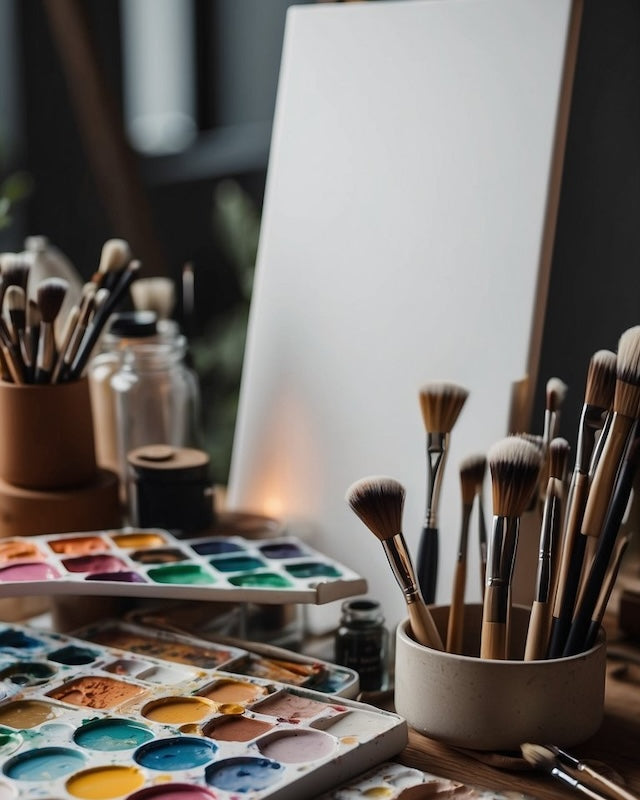
Can You Use Watercolor on Canvas: A Guide to Technique and Preparation
Share
Watercolor painting is often associated with paper, but you might be surprised to learn that you can use watercolors on canvas too. This unique combination opens up new possibilities for artists looking to explore different textures and techniques.
Yes, you can use watercolor on canvas – with the right preparation and materials. Special watercolor canvases are made to absorb water-based paints, allowing you to create beautiful watercolor pieces on a sturdier surface. These canvases are treated with a special gesso or ground that helps the paint adhere and prevents it from beading up.
If you’re interested in trying watercolor on canvas, you’ll need to adjust your technique slightly. The canvas texture can affect how the paint flows and dries, creating interesting effects. You may find that you need to use more water or paint than you would on paper. With practice, you can master this exciting medium and add a new dimension to your watercolor art.
Preparing the Canvas for Watercolor
Getting your canvas ready for watercolor painting is key. The right prep work will help your paints go on smoothly and look their best.
Choosing the Right Canvas
One option is to choose a canvas that has already been prepared for watercolors. Look for “watercolor canvas” or “watercolor canvas boards” at art stores. These are made to soak up water better than regular canvas.
Watercolor canvases come in different textures. Some are smooth, others are rough. Try a few to see what you like best. Make sure the canvas is acid-free and archival quality. This helps your art last longer without fading or breaking down.
Canvas Treatment and Priming
You can also buy a blank canvas and prep it yourself. Start by applying gesso or watercolor ground. These products help the canvas soak up paint better.
Use a big brush to put on 2-3 coats of gesso or ground. Let each coat dry before adding the next. Sand lightly between coats if you want a smoother surface. The last coat should be very thin.
You can also use absorbent ground. This makes the canvas act more like watercolor paper. It soaks up paint well and lets you lift color easily. Apply it the same way as gesso.
Watercolor Techniques and Application

Watercolor on canvas offers unique ways to create art. It lets you blend colors and make special effects. You’ll need specific tools and methods to get the best results.
Tools for Watercolor on Canvas
Choose the right brushes for watercolor on canvas. Round brushes are good for details. Flat brushes work well for washes.
You’ll need watercolor grounds to prep your canvas. Apply several thin layers for the best surface.
Pick high-quality watercolor paints. They give you better color and control.
Use a palette for mixing colors. This helps you create the perfect shades for your artwork.
More Fun Watercolor Techniques
Wet-on-wet is a key technique. You paint on a wet surface for soft edges. Wet-on-dry gives you sharp lines and details. Use it for precise work.
Glazing adds depth to your painting. You layer thin washes of color over dry paint. This creates rich, glowing effects.
Try lifting color to fix mistakes or add highlights. Use a damp brush or paper towel to gently remove paint.
Experiment with textures. Sprinkle salt on wet paint for a speckled look. Use plastic wrap for interesting patterns.
